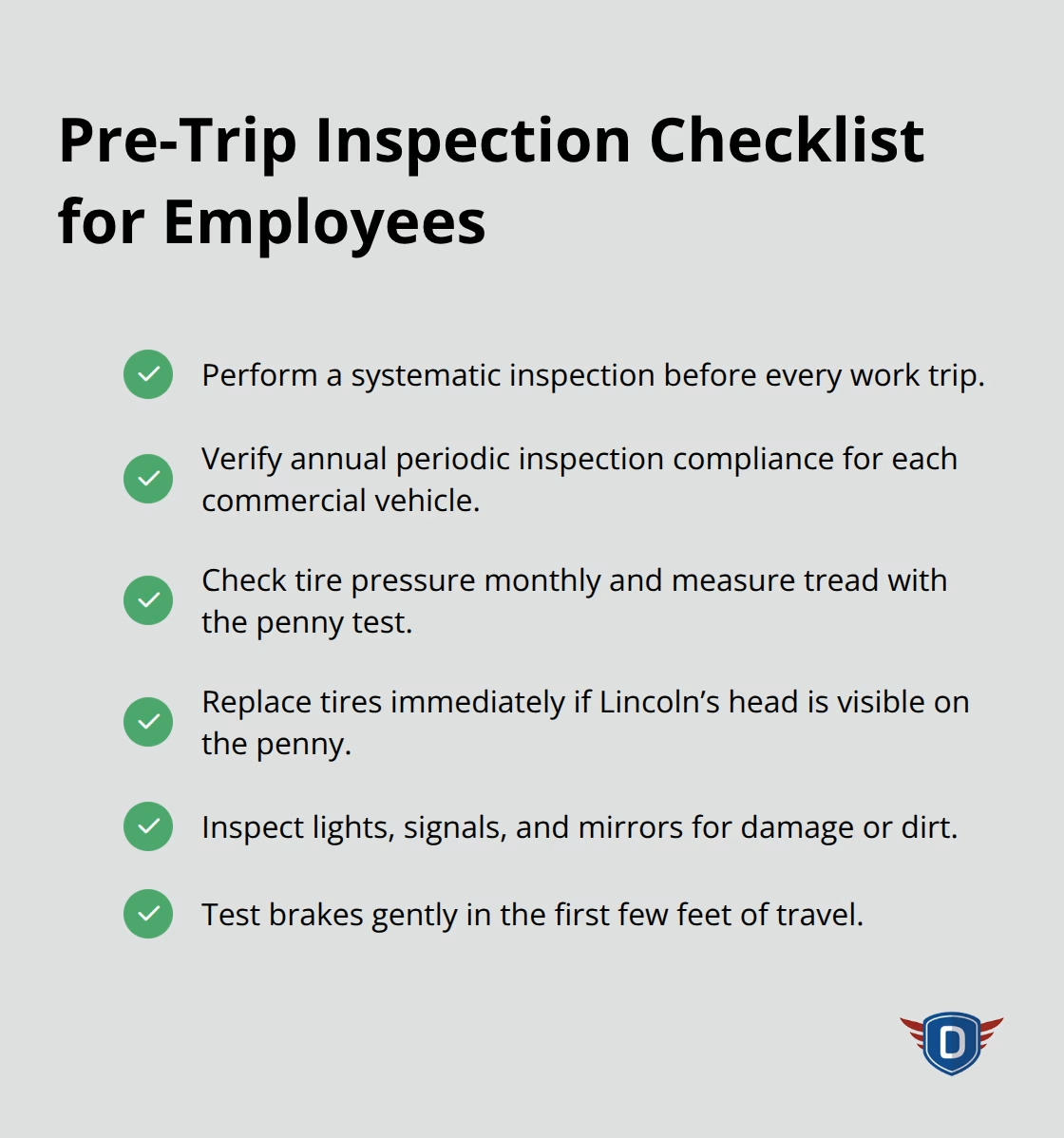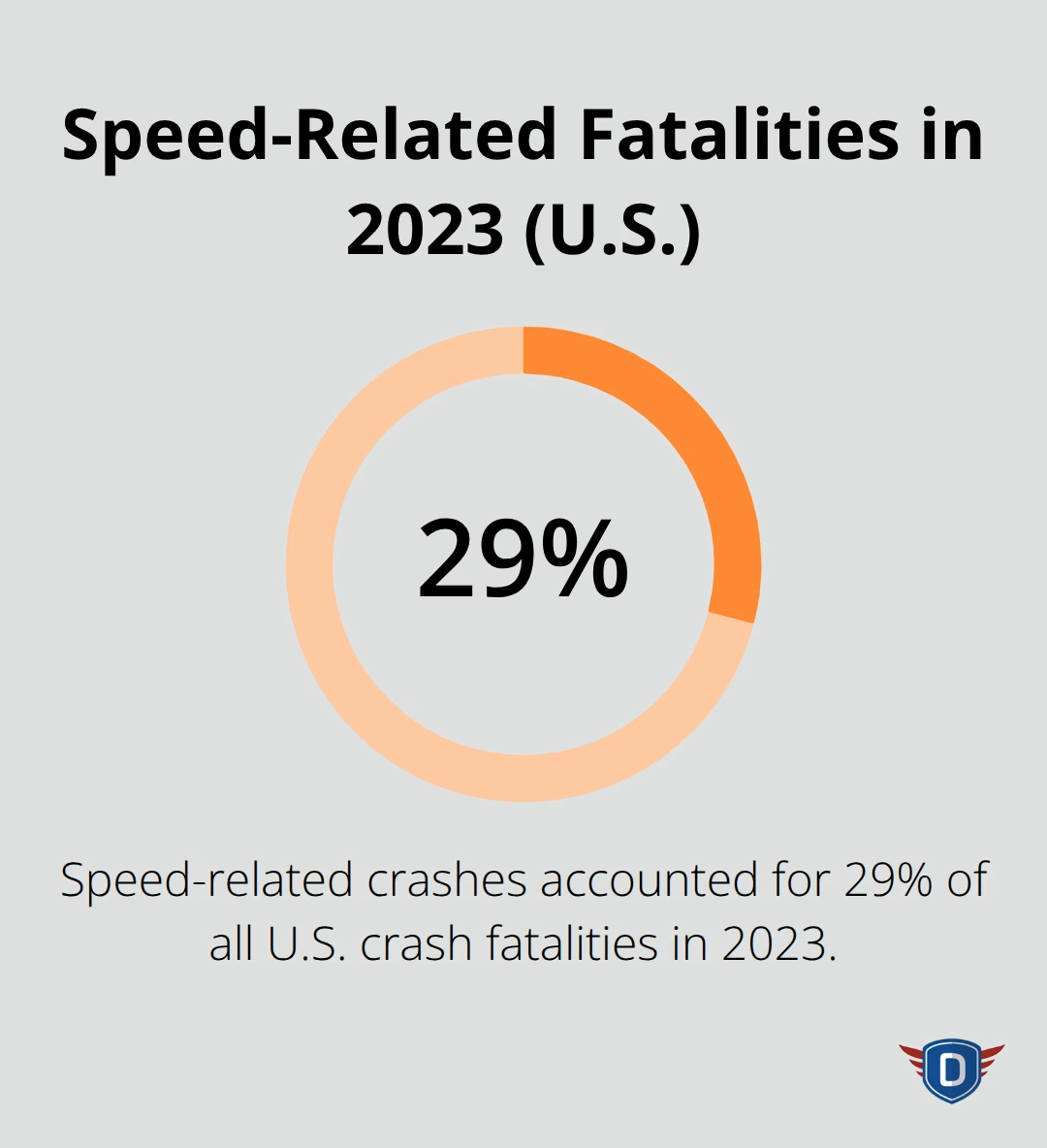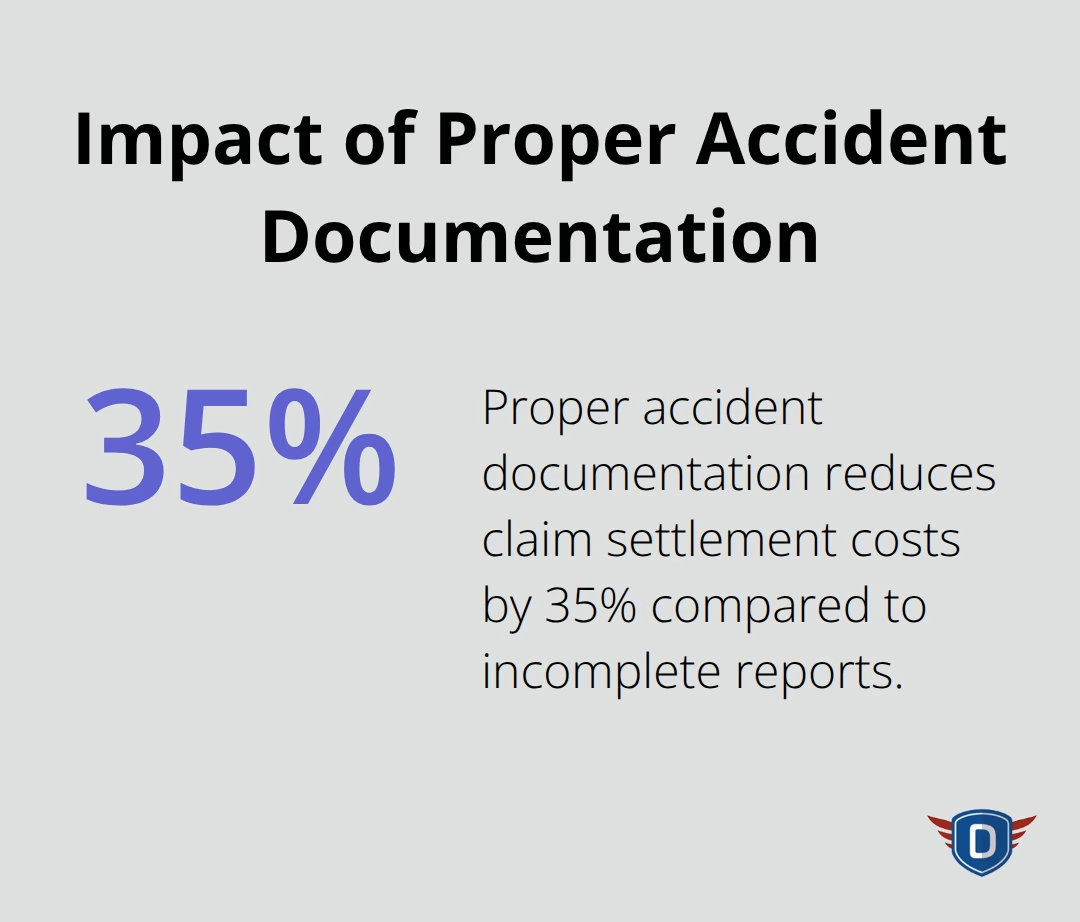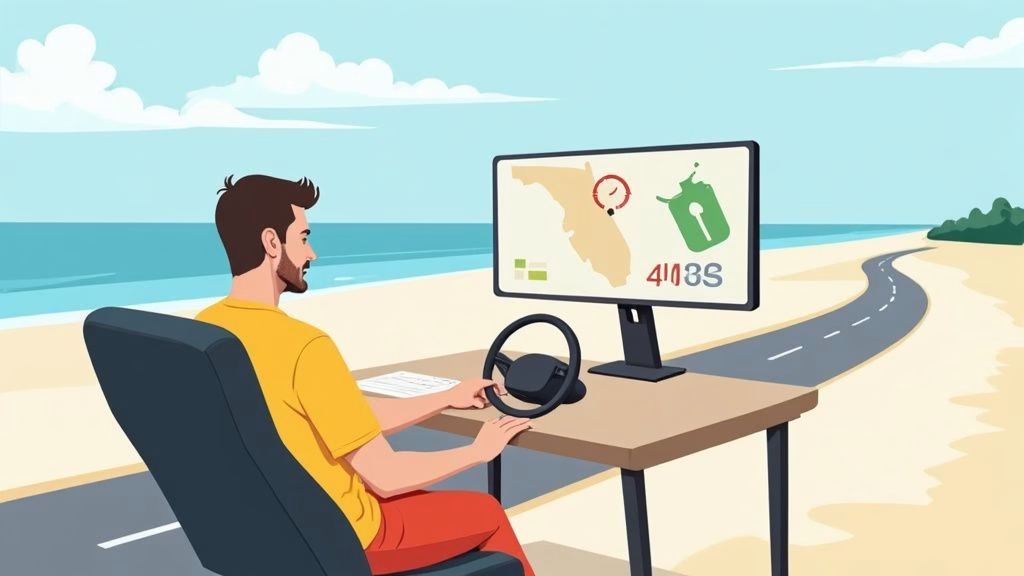Employee driving incidents cost companies billions annually in liability claims, vehicle repairs, and lost productivity. The National Safety Council reports that work-related crashes are the leading cause of occupational deaths.
We at floridanewdriver.com have compiled these safe driving tips for employees to protect both workers and businesses. These practices reduce accident rates by up to 40% when implemented consistently.
Pre-Drive Safety Checks and Preparations
Vehicle Inspection Requirements
Smart employees complete a systematic vehicle inspection before every work trip. The Federal Motor Carrier Safety Administration requires commercial drivers to perform pre-trip inspections, and these practices benefit all employee drivers. Every commercial vehicle, including each segment of a combination vehicle, must undergo periodic inspection at least once every 12 months. Check tire pressure monthly and inspect tread depth with the penny test – insert a penny into the tread with Lincoln’s head down. Replace the tire immediately if you see the top of his head.

Seat and Mirror Adjustments for Optimal Visibility
Position your seat so you can comfortably reach all controls while you maintain a slight bend in your knees. Adjust your rearview mirror to frame the entire rear window and set side mirrors to minimize blind spots – you should barely see your vehicle’s edge in each mirror. This setup eliminates the dangerous shoulder check and helps improve lane-change safety, as AAA research has evaluated blind-spot monitoring and lane-departure warning systems to catalog their performance in various traffic conditions.
Mobile Device Management and Hands-Free Setup
Mount your phone before you start the engine and activate hands-free mode immediately. The National Safety Council found that hands-free calls still increase crash risk by four times, but physical phone handling increases it by 23 times. Download offline maps and set your destination before you drive – even brief glances at navigation apps cause dangerous attention lapses. Complete phone shutdown policies during work hours provide maximum safety, as even voice calls impair reaction times significantly.
These preparation steps create the foundation for safe work travel. However, proper vehicle setup means nothing without the right approach to defensive techniques on the road.
Defensive Driving Techniques for Work-Related Travel
Speed Control and Following Distance Management
According to the National Highway Traffic Safety Administration, there were an estimated 5,930,496 police-reported traffic crashes in 2022 in which 42,514 people were killed. Apply the four-second rule in normal conditions – count the seconds between when the vehicle ahead passes a fixed object and when you reach the same point. Increase this to six seconds during rain and eight seconds in snow or ice.

Speed management requires strict adherence to posted limits, but smart employees drive 5-10 mph below speed limits during peak traffic hours. Almost 12,000 deaths – 29% of all crash fatalities – occurred in speed-related crashes in 2023. Monitor your speedometer constantly rather than relying on traffic flow, as other drivers frequently exceed safe speeds.
Weather Condition Adaptations
Reduce speed by one-third in wet conditions and by half when snow covers the road surface. Turn on headlights during any precipitation – visibility drops to 500 feet in moderate rain and 200 feet in heavy downpours. Winter tires become mandatory on many British Columbia routes starting October 1st, and proper tread depth assessment prevents dangerous skids.
Check tire condition before winter weather arrives (the penny test works effectively for quick tread evaluation). Adjust your route plans to avoid steep hills and sharp curves when ice forms on road surfaces. Allow extra travel time during adverse weather to prevent rushed decisions that lead to accidents.
Managing Aggressive Drivers and Road Rage Situations
Never engage aggressive drivers through eye contact, gestures, or speed matching. Create space by changing lanes or pulling over safely when confronted by hostile behavior. The American Automobile Association reports that aggressive driving contributes to 56% of fatal crashes, making avoidance your primary defense strategy.
Keep your doors locked and windows up when confronted by road rage incidents. Report dangerous drivers to police using hands-free calling, providing license plates and location details (document the time and location for accurate reports). Focus on your own driving rather than correcting other drivers’ mistakes – defensive driving means you anticipate poor decisions from others and position your vehicle to avoid conflicts.
These defensive techniques form the backbone of safe work travel, but they work best when combined with clear company policies that establish consistent safety standards across your entire fleet.
Company Vehicle Policies and Best Practices
Fleet Safety Regulations and Legal Compliance
Motor vehicle accidents are a significant cause of workplace fatalities, with 5,283 fatal work injuries occurring in 2023 according to the Occupational Safety and Health Administration. Companies must implement zero-tolerance policies for drug and alcohol use among drivers, conduct regular checks of records every six months, and maintain detailed driver qualification files. The Federal Motor Carrier Safety Administration requires commercial vehicle operators to pass medical examinations every two years, but smart employers extend similar health screenings to all employee drivers. GPS systems provide real-time monitoring of speed violations, harsh brake events, and route deviations – companies that use these systems report 15-25% reductions in accident rates within the first year of implementation.
Accident Response and Documentation Standards
Immediate accident response protocols save companies thousands in liability costs and legal complications. Train employees to contact emergency services first, then company management within 30 minutes of any incident regardless of severity. Document the scene with photographs from multiple angles, collect insurance information from all parties, and obtain police report numbers when available. The National Safety Council estimates that proper accident documentation reduces claim settlement costs by 35% compared to incomplete reports. Establish partnerships with preferred repair facilities and rental car companies to minimize downtime after incidents.

Cost Control Through Driver Performance Management
Traffic accidents cost United States businesses approximately 72.2 billion dollars annually (covering medical care, liability, property damage, and lost productivity). Implement fuel efficiency programs that teach smooth acceleration, optimal distances, and route plans – these techniques reduce fuel consumption by 10-15% while simultaneously improving safety outcomes. Create incentive programs that reward drivers for accident-free periods, fuel efficiency achievements, and completion of additional safety courses. Regular performance reviews that use telematics data help identify high-risk drivers before accidents occur, which allows for targeted intervention through additional education or vehicle restrictions.
Final Thoughts
These safe driving tips for employees create measurable improvements in workplace safety and financial performance. Companies that implement comprehensive driver safety programs report 40% fewer accidents and significantly reduced insurance premiums. Pre-drive inspections, defensive driving techniques, and clear company policies work together to protect both employees and organizational assets.
The financial impact extends beyond accident prevention. Proper speed management and following distance protocols reduce fuel consumption by 10-15% while GPS systems deliver 15-25% accident reductions within twelve months. Zero-tolerance policies for impaired drivers and regular record checks demonstrate due diligence that insurance providers reward with lower rates.
We at floridanewdriver.com provide comprehensive driver education programs with certified instructors who help employees master essential skills. Regular refresher courses and performance reviews that use telematics data identify high-risk behaviors before they cause incidents. This approach creates a culture where safety becomes second nature rather than an afterthought (transforming workplace driving from reactive to proactive management).







